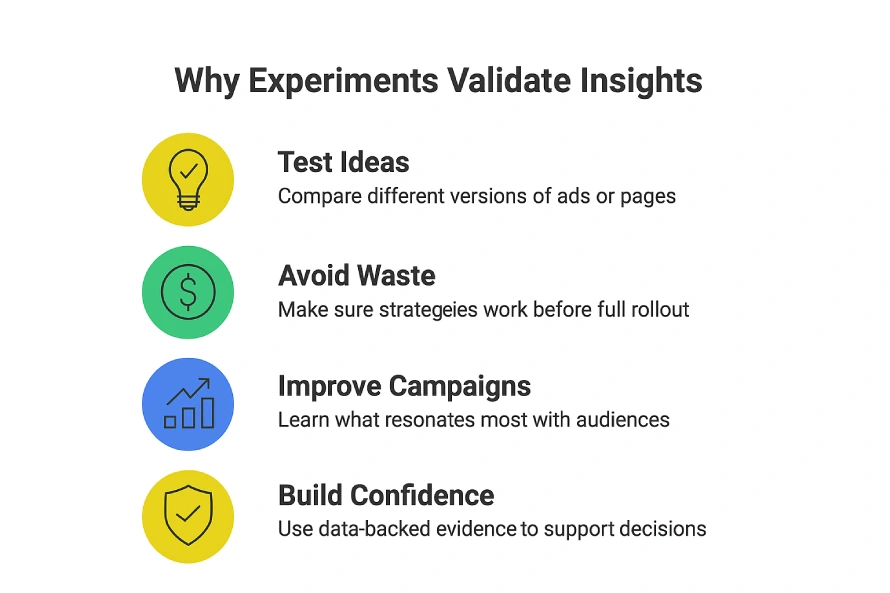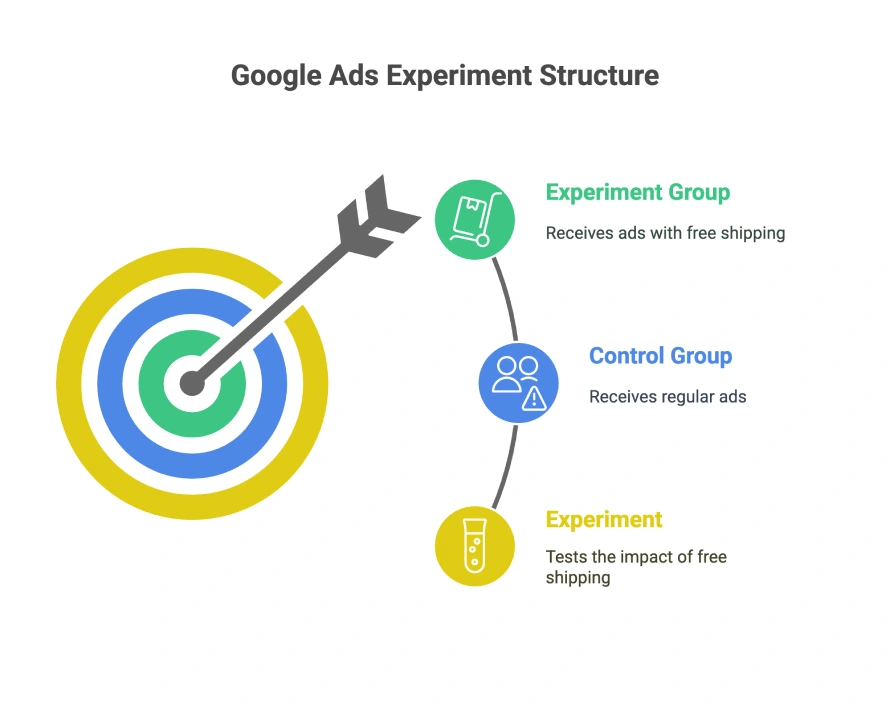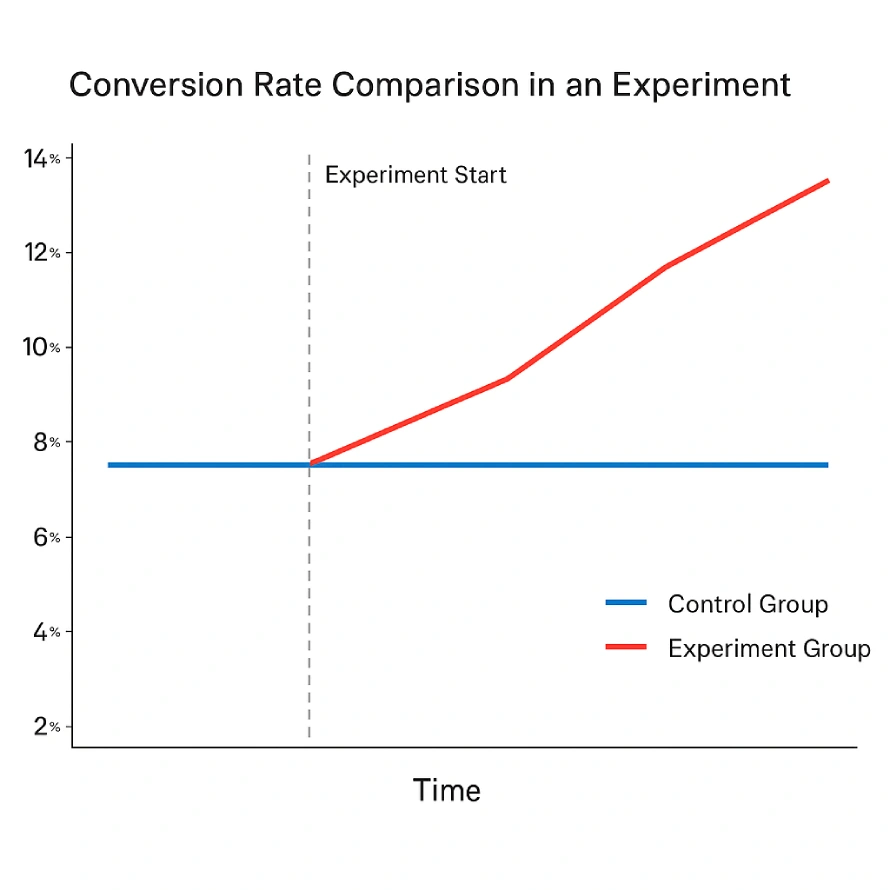If you’re preparing for the Google Ads Measurement Certification, you’ll encounter questions about how to improve your measurement approach and make smarter marketing decisions. One important concept is how experimentation helps you test and validate insights to get better campaign results.
In this guide, I’ll explain the correct answer, show real-life examples, and include a simple comparison table. I’ll also explain why the other answer choices don’t quite fit. By the end, you’ll clearly understand why running experiments is essential for a best-in-class measurement approach — and feel confident answering related exam questions. Let’s get started!
Question and Correct Answer
How does experimentation contribute to a best-in-class measurement approach?
- Experiments are a way to validate and test insights.
- Experiments help assign credit across touchpoints.
- Experiments are used to drive a macro budget strategy.
- Experiments assist in the collection of multiple data points.
Correct Answer:
✅ Experiments are a way to validate and test insights.
Why the correct answer is right

Experiments are a way to validate and test insights, which means they help you check if your marketing ideas actually work in the real world. Instead of guessing or assuming what will perform better, experiments give you solid proof by comparing different versions of your ads, landing pages, or other campaign elements.
Think of experiments like a science test: you create a controlled setting where only one thing changes at a time — maybe the headline of your ad or the call-to-action button color. Then you observe how each version performs. This clear, direct comparison lets you see what truly makes a difference, rather than relying on assumptions or incomplete data.
This process is super valuable because it helps you:
- Avoid wasting money on strategies that might look good on paper but don’t work with real customers.
- Make smarter decisions based on actual results instead of gut feelings.
- Continuously improve your campaigns by learning what resonates most with your audience.
- Build confidence in your marketing choices, because you have data-backed evidence to support them.
Without experimentation, marketers might misinterpret data or fall for biases, which can lead to poor decisions and lost ad spend. But with experiments, you test your insights before fully committing, making your measurement approach best-in-class.
In short, experiments turn uncertainty into clarity. They prove whether your ideas will help reach your goals — whether that’s more clicks, leads, or sales — so you can optimize your ads with confidence.
Why the other options are wrong

When you’re learning about experimentation in Google Ads measurement, it’s important to understand why the other answer choices don’t quite fit. Let’s break down each one:
| Option | Why It’s Wrong |
|---|---|
| Experiments help assign credit across touchpoints. | Attribution assigns credit, but experiments mainly test if changes cause results—they don’t assign credit. |
| Experiments are used to drive a macro budget strategy. | Macro budget decisions rely on big-picture data, but experiments focus on testing specific changes or ideas. |
| Experiments assist in the collection of multiple data points. | While experiments collect data, their main goal is to validate insights, not just gather many data points. |
Understanding why these options are wrong helps clarify what experiments truly do — they test and validate insights to make better marketing decisions.
Real-life exam example
To really understand how experimentation works, let’s look at a simple example you might see in a Google Ads exam—or even experience in real marketing work.
Imagine a small online store that sells running shoes. The marketing team wants to increase sales but isn’t sure if adding a “Free Shipping” message to their ads will help. They have a hunch it might attract more buyers, but they need proof before spending extra money on a full campaign change.

Here’s what they do:
- They set up an experiment in Google Ads.
- One group of customers (the control group) sees the regular ads without the free shipping message.
- Another group (the experiment group) sees ads with the free shipping message clearly stated.
After running the experiment for a few weeks, they compare the results:
- The experiment group shows a 15% higher conversion rate (more people bought shoes after clicking the ad).
- The control group’s sales stay the same.
Because of this clear difference, the team knows the free shipping message works. They decide to update all their ads with that message, confident it will improve sales.
This experiment saved them from guessing and risking money on a change that might not work. Instead, it gave them real data to back their decision. This is exactly how experimentation helps create a best-in-class measurement approach — by testing ideas, learning from results, and improving campaigns step-by-step.
Comparison Table
| Aspect | Experimentation | Attribution | Budget Strategy |
|---|---|---|---|
| Purpose | Test and validate insights | Assign credit across touchpoints | Allocate budget at a macro level |
| Focus | Cause-and-effect of changes | Credit for conversions | Overall budget distribution |
| Outcome | Clear proof if an idea works or not | Understanding customer journey touchpoints | High-level financial decisions |
| Example | A/B test different ad copies | Multi-touch attribution modeling | Setting monthly ad spend |

Resource Links
- Google Ads Help: About Experiments
- Google Skillshop: Google Ads Measurement Certification
- Think with Google: How to Use Experiments to Improve Marketing
Conclusion
Experimentation is a powerful tool in Google Ads measurement. It helps marketers test ideas before committing resources, leading to smarter decisions and better campaign results. By validating insights through experiments, businesses avoid costly mistakes and improve ROI. So, always think about running experiments to build a best-in-class measurement approach.
Finally, I can say that if you are ready, you can take the exam on Skillshop – Google Ads Measurement Certification. If you want more real exam questions and answers like this one, which have already been covered, follow along. I’ll be breaking down more Google Ads Measurement Certification exam questions with full solutions in the next posts on Google Ads!
FAQs
What exactly is experimentation in Google Ads?
Experimentation means running tests where you try out different versions of your ads, keywords, or landing pages to see which one performs better. It’s like a controlled comparison that helps you learn what works best with real customers before making big changes.
Why should I run experiments instead of just guessing what will work?
Guessing can lead to wasted money and missed opportunities. Experiments give you real evidence by comparing results between different groups. This helps you make smart decisions based on actual data, not assumptions.
How long should an experiment run?
It depends on your traffic and goals, but generally, experiments should run long enough to collect enough data for reliable results, usually a few weeks. Ending too soon might give misleading outcomes because of small sample sizes.
Can experiments be used for anything in my campaigns?
You can experiment with many things—ad text, images, keywords, bids, landing pages, and more. The key is to test one major change at a time so you know exactly what caused any difference in results.
Do experiments replace attribution models?
No, experiments and attribution models serve different purposes. Attribution models assign credit to different ads or channels along the customer journey, while experiments test if specific changes improve your campaign performance.
What if my experiment shows no difference?
That’s still useful information! It means your change didn’t impact results, so you can avoid spending resources on that idea. You can then try testing a different approach or hypothesis.
Is experimentation only for big companies?
Not at all! Even small businesses benefit from experiments because they help save money and improve marketing results. Google Ads makes it easy to set up experiments regardless of your budget or size.

